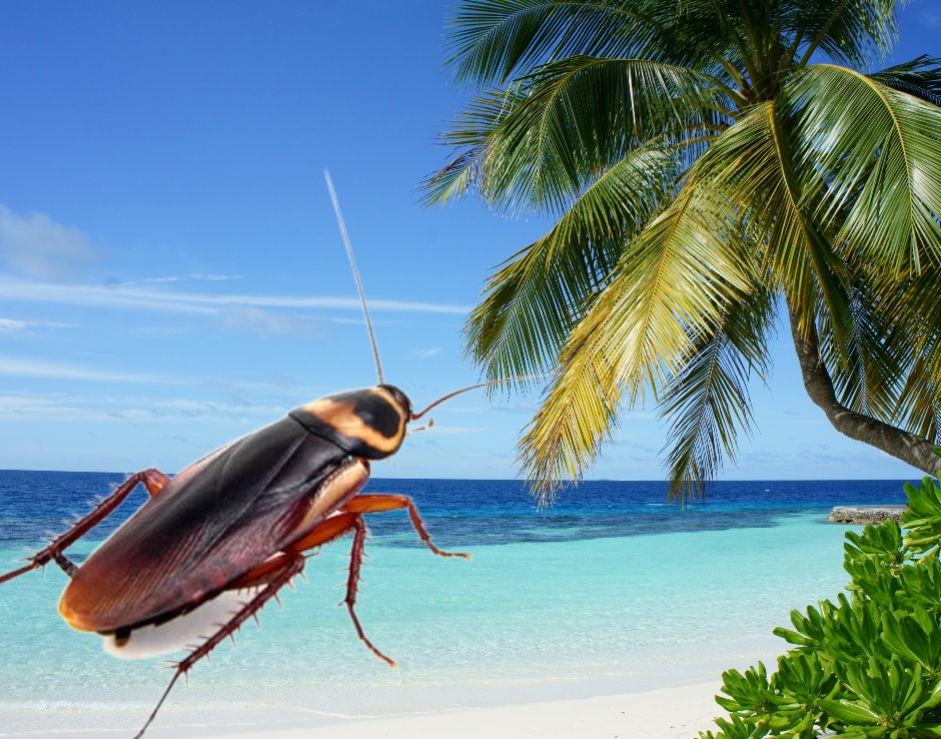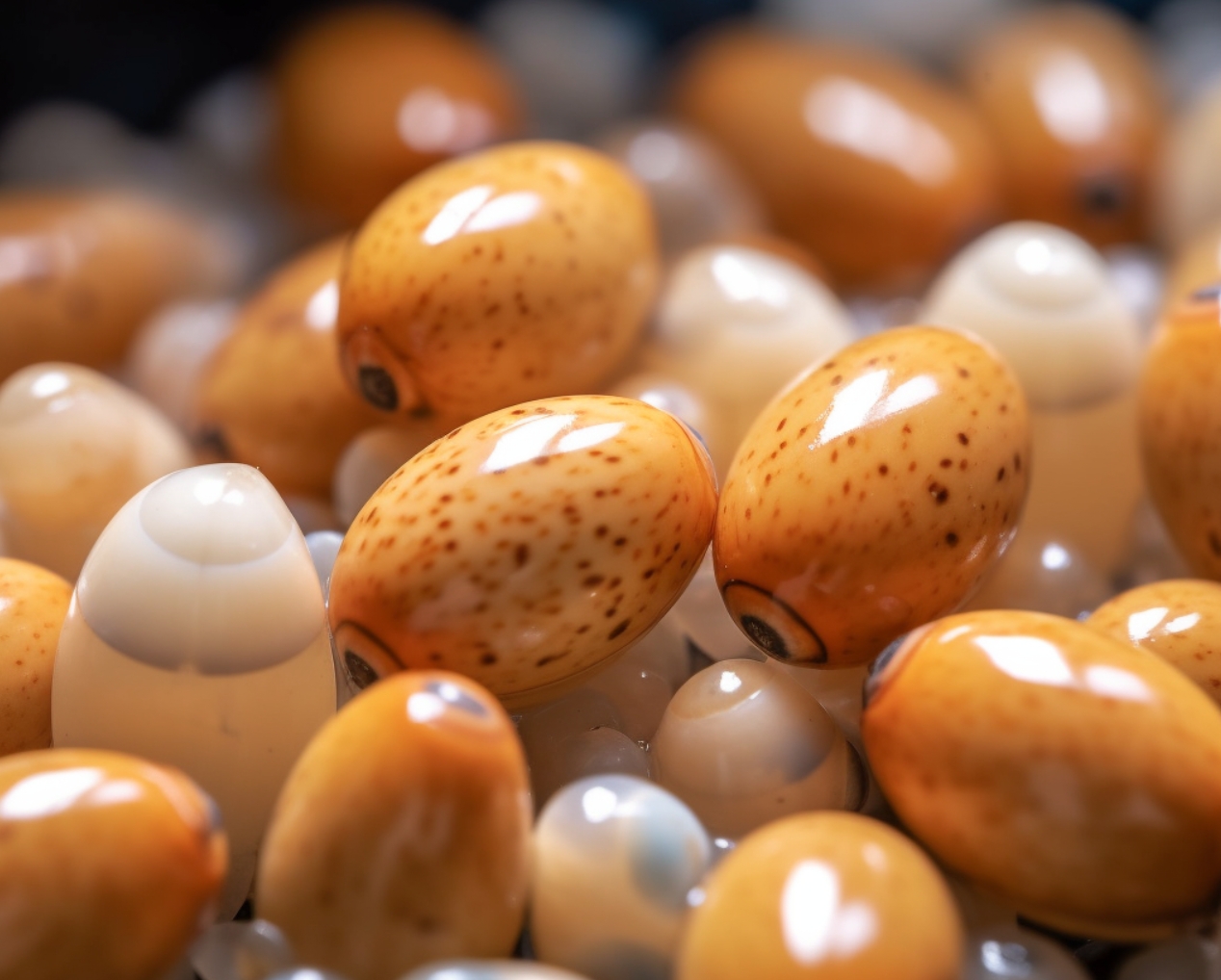Ah, Hawaii! A paradise of beaches, volcanoes, and… cockroaches? Yes, you read that right. While Hawaii is known for its breathtaking landscapes and vibrant culture, it’s also home to a variety of cockroach species. But don’t let that deter you! With a bit of knowledge and some preventive measures, you can keep these pesky critters at bay. Let’s dive in, shall we?

Imagine you’re sipping on a tropical drink, enjoying the Hawaiian sunset, and suddenly, a cockroach scurries by. Not the most pleasant thought, right? Cockroaches are indeed common in Hawaii, with a whopping 19 different species found across the islands. These insects thrive in the warm, humid climate of Hawaii, making both indoor and outdoor spaces their playground.
But why are they even there? Well, while they’re often seen as pests, they’re also a part of the local ecosystem. They can be found in various environments, from our cozy homes to bustling businesses and serene outdoor spaces.
Did you know?
Cockroaches have been around for millions of years, even outliving the dinosaurs! So, while they might be unwelcome guests in our homes, they’re truly survivors in the grand scheme of things.
Meet the Usual Suspects
Contents
Let’s get acquainted with the most common cockroach culprits in Hawaii:
| Cockroach Type | Appearance | Habitat & Behavior |
|---|---|---|
| American Cockroach | Large, reddish-brown | Often found in basements, cracked walls, and foundations. Fun fact: Locals sometimes call it the B52 cockroach! |
| German Cockroach | Small, light brown to tan with two dark stripes on their backs | Known for rapid reproduction. They can infest homes and buildings in the blink of an eye! |
| Surinam Cockroach | Dark brown or black | Commonly found both indoors and outdoors. This one’s also known as the Hawaiian cockroach. |
Pop Quiz! Can you guess which cockroach is often referred to as the B52? If you said the American cockroach, you’re right!
Types of Roaches in Hawaii: A Comparative Table
| Cockroach Type | Indoor/Outdoor | Size | Appearance | Habits | Special Notes |
|---|---|---|---|---|---|
| American “B52” Cockroach | Outdoor/Indoor | >2 inches | Reddish-brown, long antennae, cream-colored cowl behind head | Found everywhere outside, especially moist areas. Indoors, they prefer bathrooms, kitchen sinks, and drains | Largest cockroach in the U.S. Known to fly, especially when threatened |
| Surinam Cockroach | Outdoor | ~1 inch | Brown to black. Females can’t fly | Tunnels through trash, soil, and compost. Active during the night | Damages plants and is a carrier of chicken eye worm |
| German Cockroach | Indoor | ~0.5 inch | Light brown to pale yellow, two stripes on cowl | Infests human structures. Can travel through walls in apartments/condos | Breeds quickly and can be challenging to control |
| Brown-Banded Cockroach | Indoor | Similar to German roach | Size of German roaches with brown bands on abdomen | Prefers drier, warmer areas up high like ceilings, picture frames, and furniture | Nearly wiped out by a parasite but still infests occasionally |
| Oriental Cockroach | Outdoor/Indoor | Not specified | Not specified | Loves cool, damp spaces. Found in landfills, sewers, and bathrooms | Not as common as other types |
| Australian Cockroach | Outdoor/Indoor | Similar to American roach | Similar to American roach | Not specified | Invades homes less often than the American cockroach |
The Battle Against the Surinam Cockroach
So, you’ve identified the Surinam cockroach in your home. What now? Here’s a step-by-step guide to reclaiming your space:
1. Seal the Fortress 🏰
- What to do? Inspect your home for any cracks, gaps, or openings.
- Why? These are VIP entrances for cockroaches.
- Pro tip: Use caulk or weatherstripping for an impenetrable defense.
2. Starve Them Out 🍕
- What to do? Keep your kitchen and dining areas spotless.
- Why? Cockroaches are like us; they love a good meal. Deny them that pleasure.
- Real-life example: Remember that time you left pizza out overnight and found a cockroach fiesta the next morning? Yep, that’s what we’re avoiding.
3. Clean, Clean, and Clean Some More 🧼
- What to do? Focus on cockroach hideouts: behind appliances, in cabinets, under sinks.
- Why? Cockroaches love dirty, cluttered spaces. A clean home is a cockroach-free home.
- Analogy: Think of cleaning like brushing your teeth. Doing it regularly prevents bigger problems down the road.
4. Set a Trap 🪤
- What to do? Place cockroach baits where you’ve seen activity.
- Why? These baits are like candy for cockroaches, but with a deadly twist.
- Rhetorical question: Who can resist a treat? Not cockroaches!
5. Bring Out the Big Guns 💥
- What to do? Use insecticide sprays for larger infestations.
- Why? Sometimes, you need to pull out all the stops.
- Caution: Always read the label and consider seeking professional help for proper application.
6. Go Natural with Borax 🌿
- What to do? Sprinkle Borax in active areas.
- Why? Cockroaches are attracted to the sugar in Borax, but it’s lethal for them.
- Note: If you have fur babies or little ones, be extra cautious. Borax isn’t pet or kid-friendly.
7. Call in the Cavalry 📞
- What to do? If the infestation persists, contact a professional pest control service.
- Why? Sometimes, you need a seasoned warrior to win the battle.
- Analogy: Think of it like calling a plumber for a major leak. Some problems need expert hands.
The Hidden Dangers of Cockroach Infestations
According to the Hawaii Administrative Rules, it’s not just about keeping your home looking pretty. There’s a genuine concern for public health, welfare, and comfort. But why such a fuss over these tiny creatures?
1. The Unseen Carriers 🦠
- Fact: Cockroaches can be carriers of harmful diseases.
- Examples: They can transmit nasties like salmonella, E. coli, and staphylococcus. Remember the last time you had food poisoning? You might just have a cockroach to thank for that!
2. The Sneezing and Wheezing 🤧
- Did you know? Cockroach remnants can be a nightmare for allergy sufferers.
- Real-life scenario: Imagine a child with asthma playing on the floor, where cockroach allergens lurk. The result? A potential asthma attack triggered by these unseen particles.
3. The Invisible Contaminators 🍔
- Rhetorical Question: Would you willingly sprinkle cockroach particles on your food?
- Reality: Cockroaches can contaminate our food and surfaces with bacteria, pathogens, and allergens. So, that sandwich left on the counter? It might come with some extra, unwanted toppings.
Building a Cockroach-Free Fortress: Prevention Tips
Now that we’ve uncovered the hidden dangers, let’s arm ourselves with the best prevention strategies. After all, prevention is better than cure, right?
1. Seal Your Castle 🏰
- Action: Inspect your home for any cracks or openings.
- Analogy: Think of these as secret tunnels for the cockroach army. Seal them, and you’ve cut off their main route inside.
2. Starvation Strategy 🍎
- Tip: Cockroaches are always on the hunt for their next meal.
- Action: Keep your kitchen spotless. Store food in airtight containers and clean up spills immediately. Remember, a hungry cockroach is a defeated cockroach.
3. The Power of Cleanliness 🧽
- Fact: Cockroaches love to hide in clutter.
- Action: Regular cleaning can be your best defense. Focus on their favorite hideouts: behind appliances, in cabinets, and under sinks.
4. Set Up Traps 🪤
- Tip: Cockroach baits can be a game-changer.
- Action: Place them in areas of activity. They attract and eliminate these pests effectively.
5. Natural Defenses 🌿
- Did you know? Borax can be a cockroach’s worst enemy.
- Caution: While it’s a natural remedy, it’s not safe for pets or kids. Use with care!
6. Call in the Experts 📞
- When to call: If you’re facing a full-blown infestation or if DIY methods aren’t cutting it.
- Why: Professional pest control services have the tools and expertise to ensure these pests are gone for good.
FAQs
Q: Are cockroaches dangerous?
A: Cockroaches might not chase you around with a knife, but they’re sneaky little carriers of harmful bacteria and allergens. They’re like uninvited guests who leave a mess behind, contaminating your food and surfaces. Plus, for those with allergies or asthma, their presence can be a real health hazard.
Q: How do I identify a cockroach infestation?
A: Ever found mysterious droppings that look like coffee grounds? Or caught a whiff of a strange, musty odor? These are telltale signs of a roach infestation. And if you spot a live or dead roach? Well, it’s time to roll up your sleeves and tackle the problem.
Q: Can cockroaches fly?
A: Picture this: a cockroach soaring through the air. Sounds like a scene from a horror movie, right? While some roaches, like the American and Asian varieties in Hawaii, have wings and can fly, they usually prefer to keep their feet on the ground. They’ll only take to the skies when they’re feeling particularly adventurous or threatened.
Q: How do I differentiate between different cockroach species?
A: Think of it as a game of “Spot the Difference.” Each roach species has its own unique look, from size and color to specific markings. The article above offers a handy guide, or you can check out resources like Best Pest World for a deep dive into roach identification.
Q: Do cockroaches bite?
A: While roaches aren’t known for their biting habits, they can occasionally give a little nip, especially if they’re feeling peckish and their usual food sources are running low. But don’t worry, their bites aren’t harmful and can be easily treated.
Q: Can I use natural remedies to get rid of roaches?
A: Fancy a DIY approach? There are a bunch of natural remedies you can try, from borax and boric acid to diatomaceous earth. But remember, while these might work for a mild infestation, severe cases might need the big guns – professional treatments.
Q: How long does it take to get rid of a cockroach infestation?
A: Ah, the million-dollar question! The answer? It depends. Factors like the severity of the infestation, the roach species, and the treatment method all play a role. It could be a matter of weeks or a long-haul battle spanning several months.
Q: Are there cockroaches in Maui?
A: Yes, Maui isn’t just popular with tourists; roaches love it too! From the large, flying “B52” roaches to the tiny German ones that love to raid your kitchen, they’re all there. But with the right precautions, they can be kept at bay.
Q: Are there cockroaches in Kauai?
A: Just like its sister islands, Kauai isn’t immune to the roach invasion. They’re somewhat a part of the local ecosystem. But with vigilance and proper care, their presence can be minimized.

